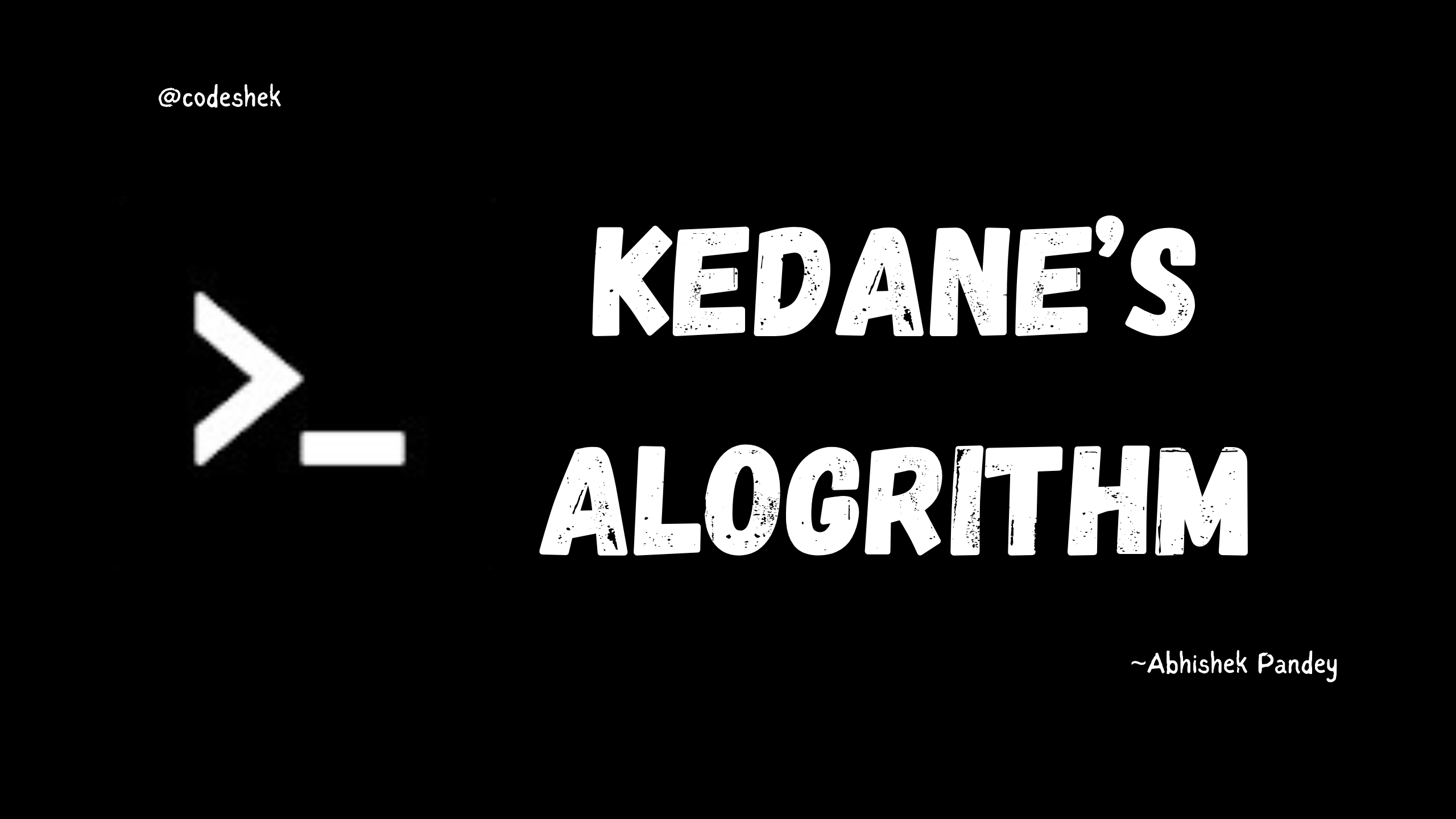Kadane's Algorithm:
 Abhishek Pandey
Abhishek Pandey
Kadane's Algorithm is a dynamic programming technique used to find the maximum sum subarray in an array of integers (containing both positive and negative numbers) in O(n) time. It is a highly efficient solution to problems involving contiguous subarrays and their sums.
When to Use Kadane's Algorithm
Kadane's Algorithm is suitable for problems involving:
Finding Maximum Subarray Sum: Problems where you need to determine the largest sum possible from a contiguous subarray.
- Example: Maximum Profit in a single interval of stock trading.
Finding Maximum Subarray Length (modified): If additional constraints like "maximum sum with fixed length" are needed.
Optimization Problems: Problems where maximizing or minimizing some value over a sequence is required, and the sequence can be split into subarrays.
Algorithm Steps
Kadane's Algorithm maintains two variables:
currentSum: Tracks the sum of the current subarray. This resets to 0 whenever it becomes negative.maxSum: Keeps track of the maximum sum encountered so far.
Maximum Subarray {>_}
(LC 53)
Given an array of integers, find the contiguous subarray with the largest sum.Approach:
1️⃣ Use Kadane’s Algorithm to track the maximum subarray sum:Add the current element to a running sum (
currsum).If
currsumexceedsmaxsum, updatemaxsum.If
currsumbecomes negative, reset it to0(start a new subarray).
2️⃣ Return the highest sum (maxsum) found.
Complexity:
🕒 Time: O(n) (Iterate through the array once).
🧠 Space: O(1) (No additional data structures).
class Solution {
public:
int maxSubArray(vector<int>& nums) {
int n = nums.size();
int maxsum = INT_MIN; // Initialize with the smallest possible value
int currsum = 0;
for (int i = 0; i < n; i++) {
currsum += nums[i];
// Update maxsum if currsum is greater
if (currsum > maxsum) {
maxsum = currsum;
}
// Reset currsum to 0 if it becomes negative
if (currsum < 0) {
currsum = 0;
}
}
return maxsum;
}
};
Maximum Sum Circular Subarray {>_}
(LC 918)
Find the maximum sum of a subarray in a circular array (where the end of the array wraps back to the start).Approach:
1️⃣ Case 1: Use Kadane’s Algorithm to find the maximum subarray sum (non-circular).
2️⃣ Case 2: Find the "circular" maximum:Compute the total sum of the array.
Use Kadane’s Algorithm to find the minimum subarray sum.
Subtract the minimum sum from the total sum to get the circular maximum.
3️⃣ Edge Case: If all elements are negative, return the non-circular maximum (maxSum), as the circular case isn't valid.
Return: The maximum of maxSum (non-circular) and totalSum - minSum (circular).
Complexity:
🕒 Time: O(n) (Single pass for both cases).
🧠 Space: O(1) (No additional data structures).
class Solution {
public:
int maxSubarraySumCircular(vector<int>& nums) {
int n = nums.size();
// Case 1: Maximum subarray sum using standard Kadane's algorithm
int maxSum = INT_MIN, currMax = 0;
for (int i = 0; i < n; i++) {
currMax += nums[i];
maxSum = max(maxSum, currMax);
if (currMax < 0) currMax = 0;
}
// Case 2: Maximum "circular" subarray sum
int totalSum = 0, minSum = INT_MAX, currMin = 0;
for (int i = 0; i < n; i++) {
totalSum += nums[i];
currMin += nums[i];
minSum = min(minSum, currMin);
if (currMin > 0) currMin = 0;
}
// If all numbers are negative, the circular case won't work
if (totalSum == minSum) return maxSum;
return max(maxSum, totalSum - minSum);
}
};
Subscribe to my newsletter
Read articles from Abhishek Pandey directly inside your inbox. Subscribe to the newsletter, and don't miss out.
Written by
